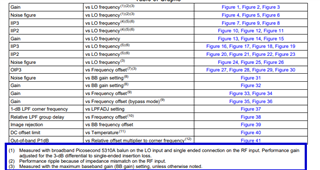Dear colleagues,
I performed evaluation measurement of IQ-demodulator TRF371109. Frequency band of interest is 300MHz. I have measured NF for one path (I or Q), with highest gain setting and I got 17dB, which is higher than the datasheet shows. There is a number cca. NF = 9dB. Measured gain fits datasheet value. I would like ask, which measurement method has been used for NF evaluation, e.g. IQ - demodulator was connected as a DSB mixer or SSB mixer? Or anything else?


